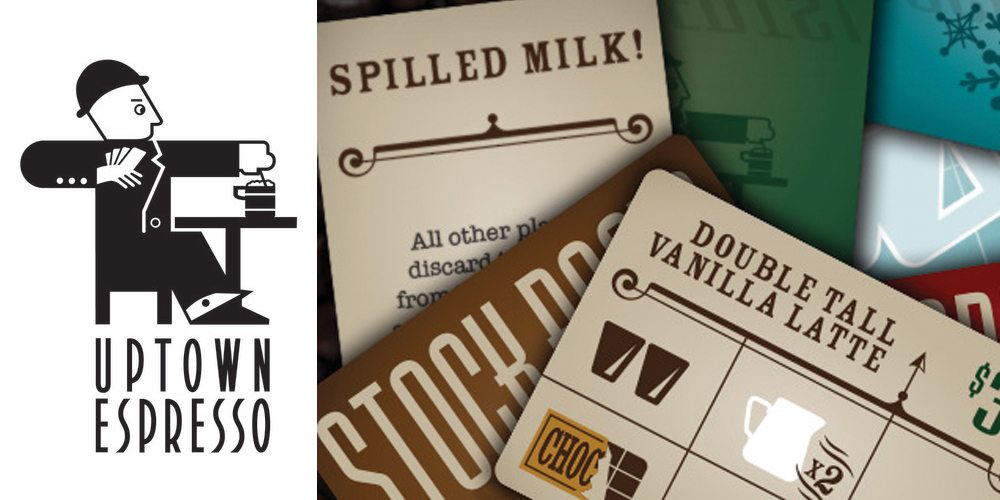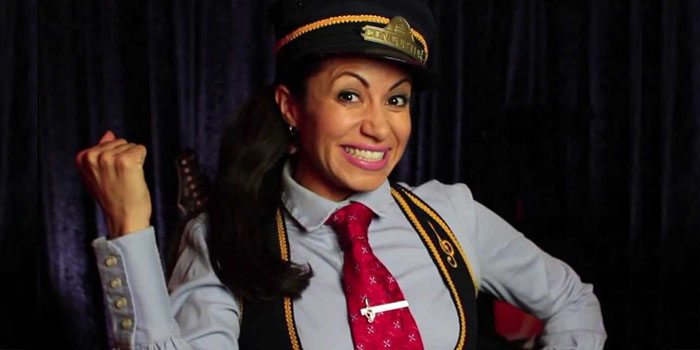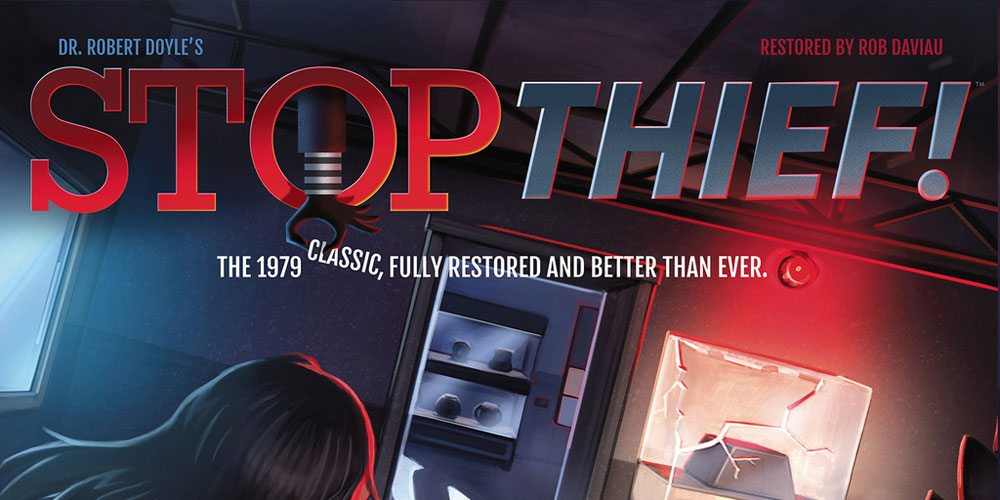Among the many Kickstarter projects that I’ll be writing about this month, here’s one that stands out because it’s not your standard tabletop game campaign. The fundraising campaign for Uptown Espresso & Gameporium is for a game and a coffee-shop-game-store. Break From Reality Games is teaming up with Uptown Espresso, an established chain of coffee shops in Seattle, to expand their West Seattle location into a gaming hub: a coffee shop, game store, and community gaming space all rolled into one. And they’ve created a fast-paced card game about serving coffee to kick it off.
Those of you who fit the Venn diagram intersection of Seattle coffee-drinking gamers are shoo-ins for this project, but for those of you who aren’t in the area can still get in on the game (and the coffee). The reward levels include various combinations of the game, a French press coffee mug, and Uptown Espresso’s house blend coffee. I’ll admit, I’m not a coffee drinker myself (and while I’m within driving distance of Seattle, I don’t travel there very often), but I’m hooked on the game. So here’s how the game works.
At a glance: Uptown Espresso is a real-time card game for 2 to 4 players, ages 8 and up, and takes about 15 minutes to play. The basic pledge level for a copy of the game is $20. The gameplay is fast-paced, so the main thing about playing with different ages is making sure that everyone understands all the rules properly before starting. Thematically it’s all about making coffee orders, so there’s nothing that I think would be inappropriate for younger players.

Components:
- 44 Order Cards
- 13 Event Cards
- 54 Back Fridge Cards
- 54 Stock Room Cards
- 1 sand timer
- 4 Registers (score tracker)
The demo prototype I got to try out didn’t have final artwork so it looks a bit different than the graphics you see above. The finished artwork looks nicer, and (importantly) it’s easier to distinguish the Back Fridge cards from the Stock Room cards at a glance. Also, the prototype I used didn’t have the cash register score trackers, so we used a pile of cubes and PennyGems, which can get a bit hairy. A score tracker would be much easier to use at a fast pace.
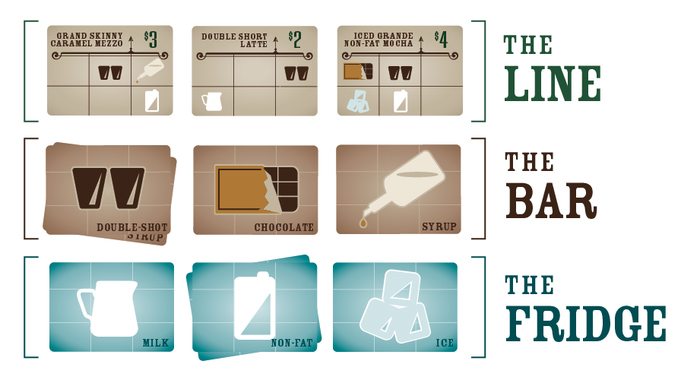
How to play
The object of the game is to be the first to make $50 by completing customer orders.
To set up, each of the decks is shuffled separately and placed near the center: Events, Orders, Back Fridge, and Stock Room. The sand timer is also placed near the middle. Each player draws four Back Fridge and four Stock Room cards, and places them in their area as their starting ingredients.
Your play area is a 3×3 grid of cards. The top row is the Line, where your customers will be. The middle row is the Bar, where your Stock Room ingredients go. Finally, the bottom row is the Fridge, where your Back Fridge cards go. There are three types of Stock Room ingredients (double shot, chocolate, and syrup), and three types of Back Fridge ingredients (milk, non-fat milk, and ice). Each type of ingredient goes in a stack in one space—you don’t ever mix different ingredients in the same space. At the beginning of the game, you’ll likely have empty spaces in your grid, but that’s fine.
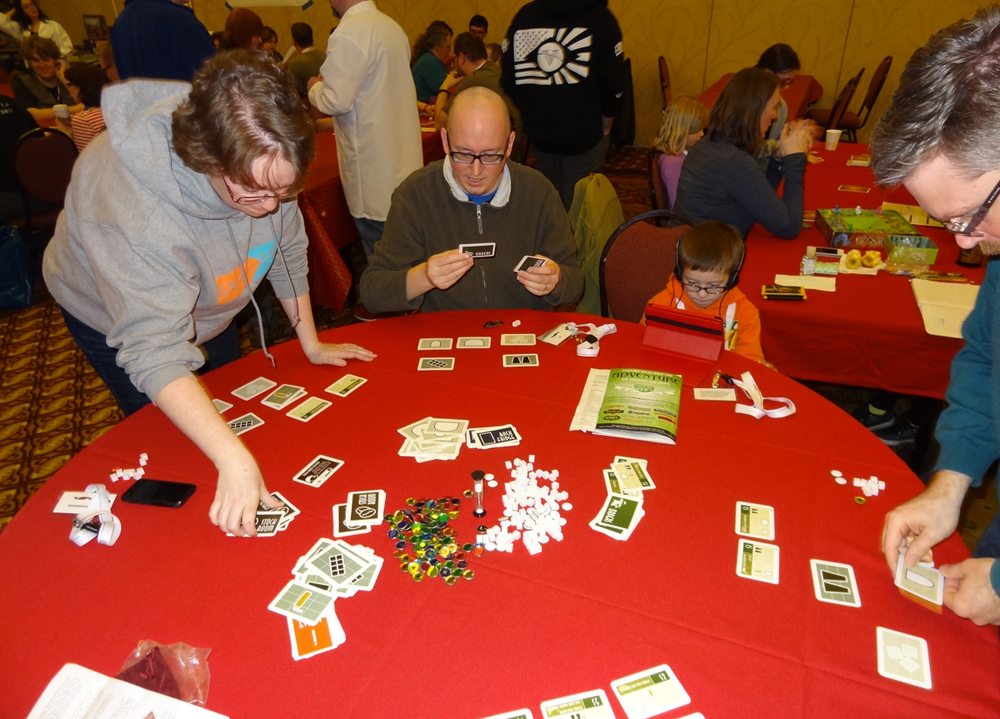
Each time the 15 second sand timer is flipped, all players may start an action. When the timer runs out, any player who is done with their action may flip the timer again. If the timer is flipped before you start an action, you forfeit an action.
Here are the possible actions:
- Take Orders – draw Order cards until you have three customers
- Restock – take a total of four cards from Back Fridge and Stock Room
- Make Drinks – make up to 2 pile swaps in your Bar and Fridge
- Ring Up Customers – fulfill drink orders, get money
- Trade – trade ingredients with another player
For the “Make Drinks” action, you can swap any two piles in your Bar or Fridge, and then swap any other two piles, to get them ready for a Ring Up Customers action.
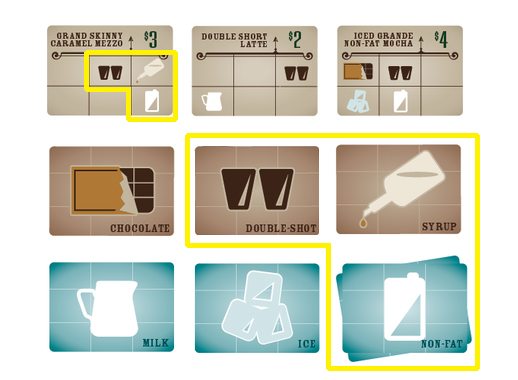
To ring up a customer, you must have the proper ingredients in the correct places of your grid. For instance, in the image above, the Grand Skinny Caramel Mezzo is ready to be served because the double shot, syrup, and non-fat milk are all in the correct positions. If, however you wanted to fix the Double Short Latte, you would have to move the double shot to the right. To serve a customer, you discard the proper ingredients, discard the order card, and get the indicated amount of money.
If you manage to serve more than one customer in one turn, you take an Event card and resolve it immediately—these help you and harm your opponents.
Note that with each flip of the timer, you only get to do one type of action. You can’t swap ingredient piles and fulfill orders in the same turn; you have to wait for another flip of the timer to do that.
Finally, there are “out of stock” cards in the ingredients decks—if you draw one, that means you’ll spend the next turn reshuffling that deck, though then the other players need to wait for you before starting an action after that. The Orders deck also has a reshuffling card that’s a Shift Change—everyone gets up and moves clockwise one seat, so then you’ll have to make do with whatever the last barista left you.
The game ends when one player reaches $50.
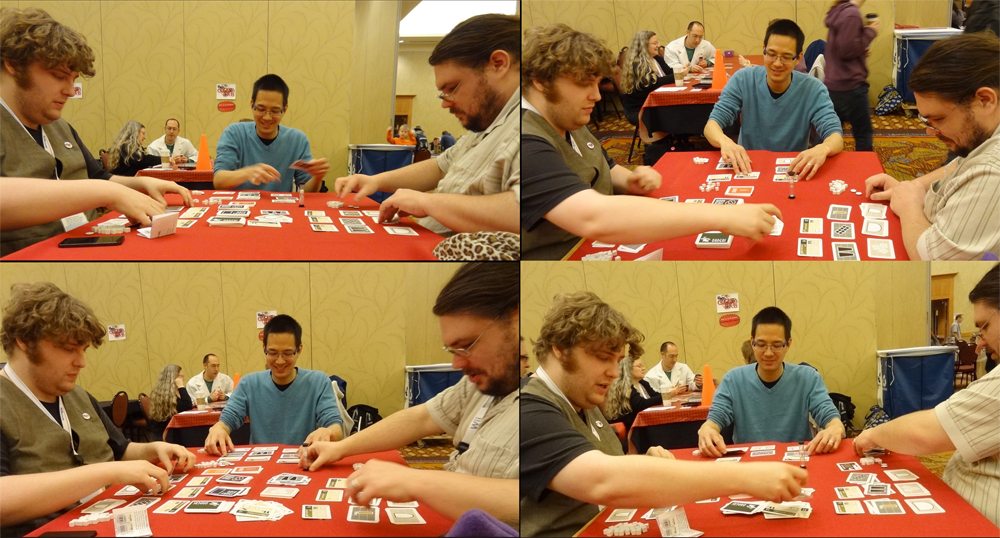
Verdict
I love real-time games. You have to think on your feet (sometimes literally) but there’s also an element of dexterity in there, because sometimes your hands don’t move as quickly as your brain does. Or sometimes the problem is the reverse—your hands are moving things that you didn’t mean to, and you make mistakes because you didn’t have time to analyze it. At any rate, real-time games are a sure-fire way to prevent the dreaded analysis paralysis that can bog down an otherwise fun game. In Uptown Espresso, the player who stops to ponder a move is going to lose several turns while doing so.
I played the prototype set a few times at GameStorm and had a blast. The old design worked all right, but the backgrounds of the Back Fridge and Stock Room cards looked pretty similar, so our discard piles would often get mixed up. I think with the different colored backgrounds it would be much easier to prevent that.
Although one of the actions is “trade,” we never actually used it, and rarely ran into a situation where it was necessary. I think when you’ve only got 15 seconds to make a decision and act on it, you generally don’t want to waste it attempting to negotiate a deal, though I think it would be interesting to try if we weren’t all so focused on fulfilling our own orders.
The one thing that I wasn’t crazy about was the reshuffling for the ingredient decks. Since it’s totally random who ends up drawing the reshuffling cards, in some games one player ended up losing several more turns than the rest, and they inevitably lost. I think next time I play I’ll introduce a house rule where you pass some sort of token clockwise—each time the reshuffling card appears, the player with the token is responsible, but then passes the token to the next player. You could also just pause the game while the reshuffling takes place, but I think the idea is to keep the game flowing rather than having frequent interruptions.
The Shift Change card for reshuffling the Orders deck is a lot of fun, if a bit chaotic. Knowing that you might have to get up and leave your ingredients and orders for another player, you have to choose between trying to set up a multiple-order turn or just fulfilling orders as soon as you can serve one customer. It also make stockpiling ingredients unwise, because you might be leaving those for somebody else.
I’ve never worked at a coffee shop, so I can’t say how this compares to the actual experience, but it’s a really fun game. You’ll find yourself griping at these customers with their overly complicated drink orders. While we were playing, we tried throwing in a rule that you had to call out the drink names as you made them, which was a lot of fun, too—the bigger orders that are worth more money tend to have really long names, so while you’re trying to read off the order, some other player is flipping the timer and starting another action.
In short, if you like fast-paced games and coffee, check out the Uptown Espresso Kickstarter campaign. It’s a lot of fun to play and will wake you up just like your morning coffee. And if you’re in the Seattle area, by all means check out the Uptown Espresso Gameporium, and consider backing the project to help improve the space!
Disclosure: GeekDad received a demo prototype of this game.
